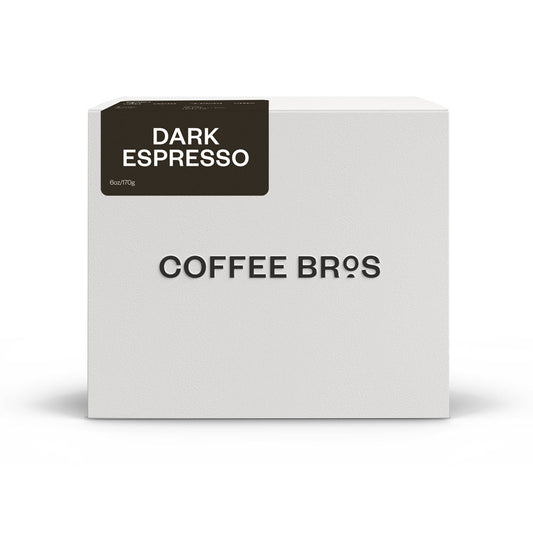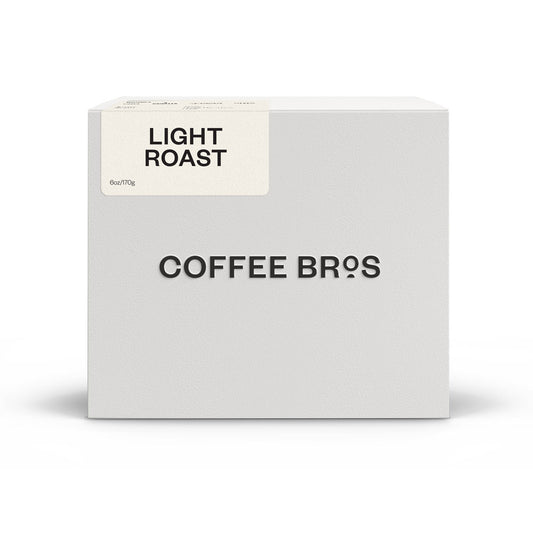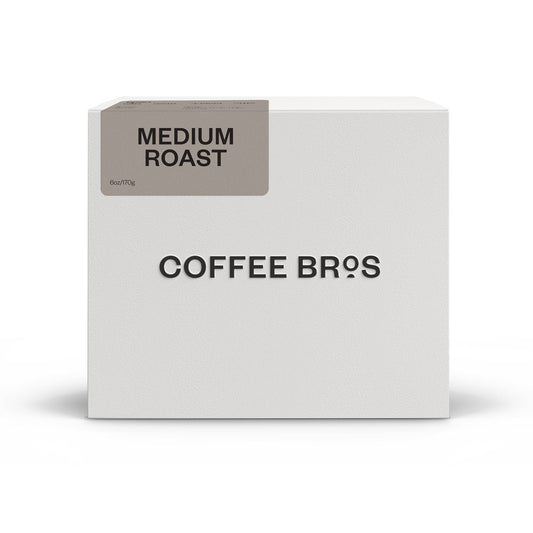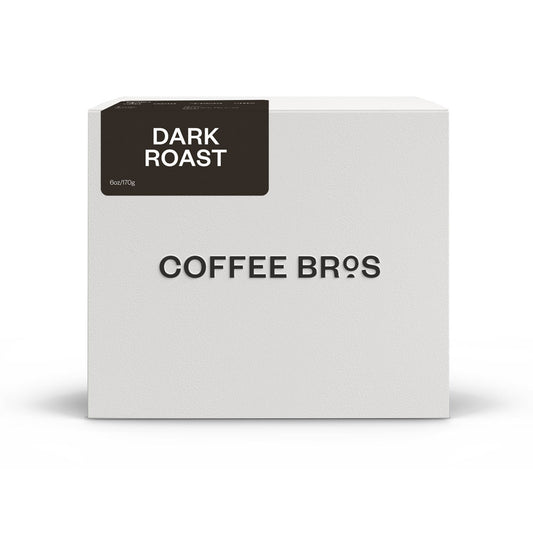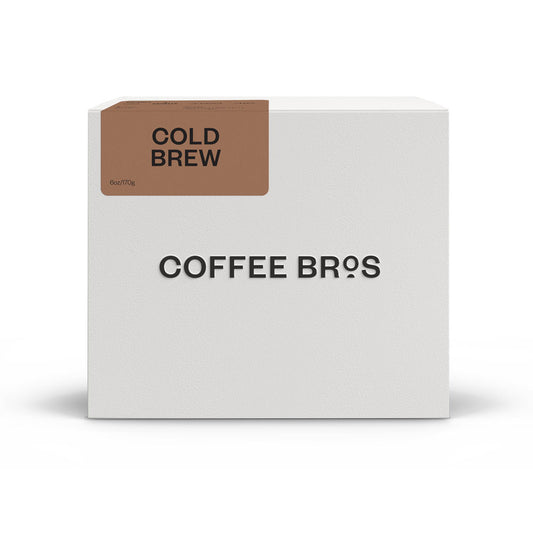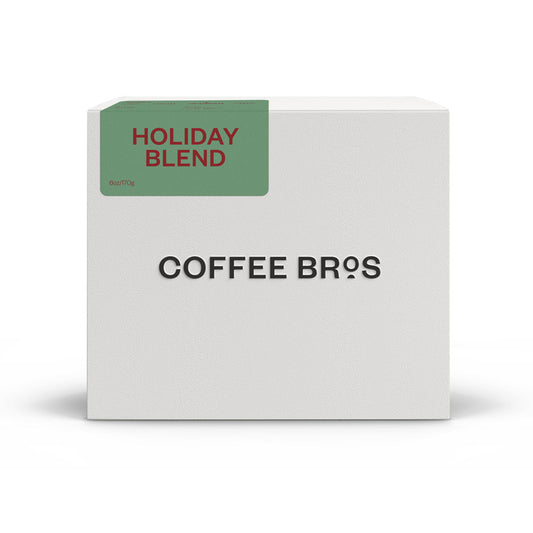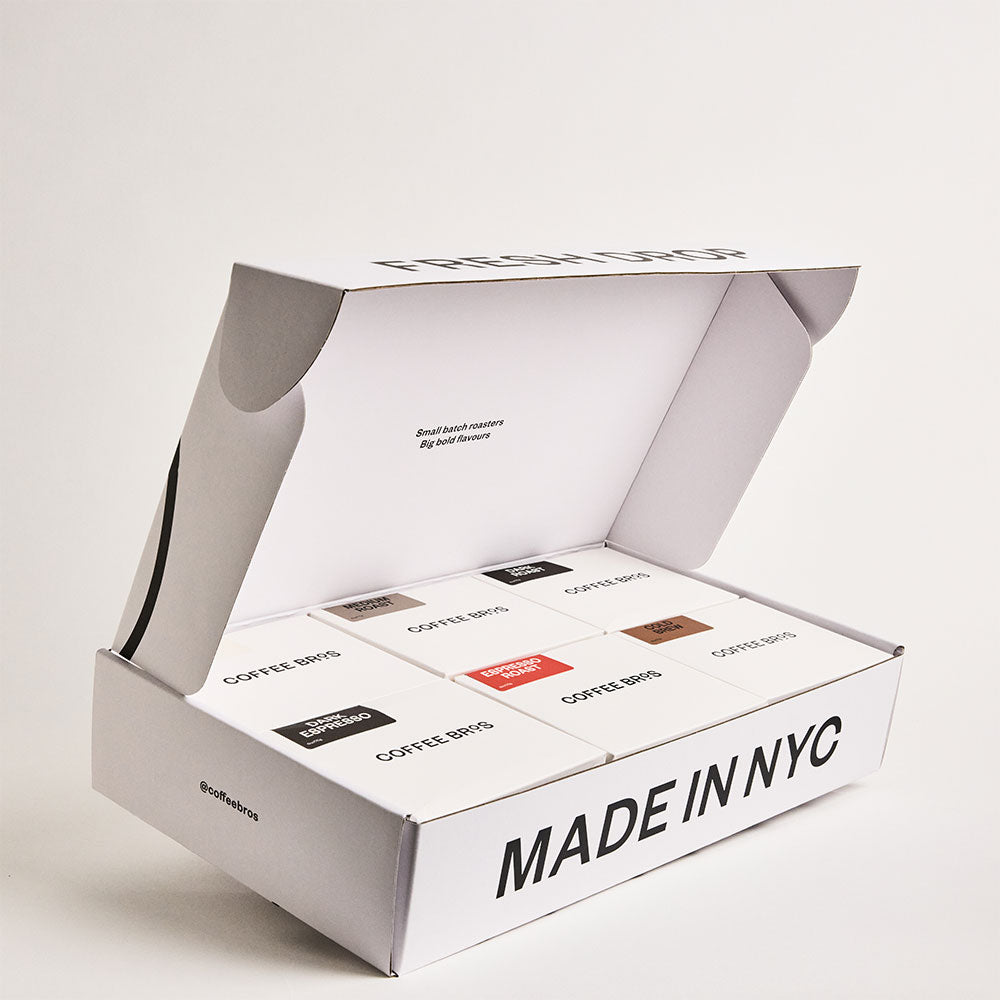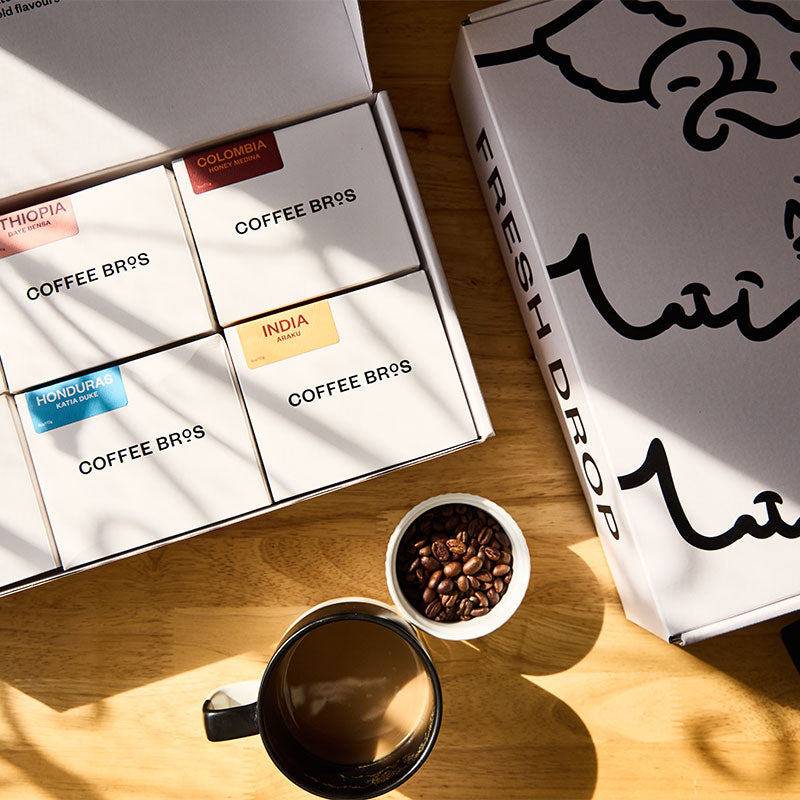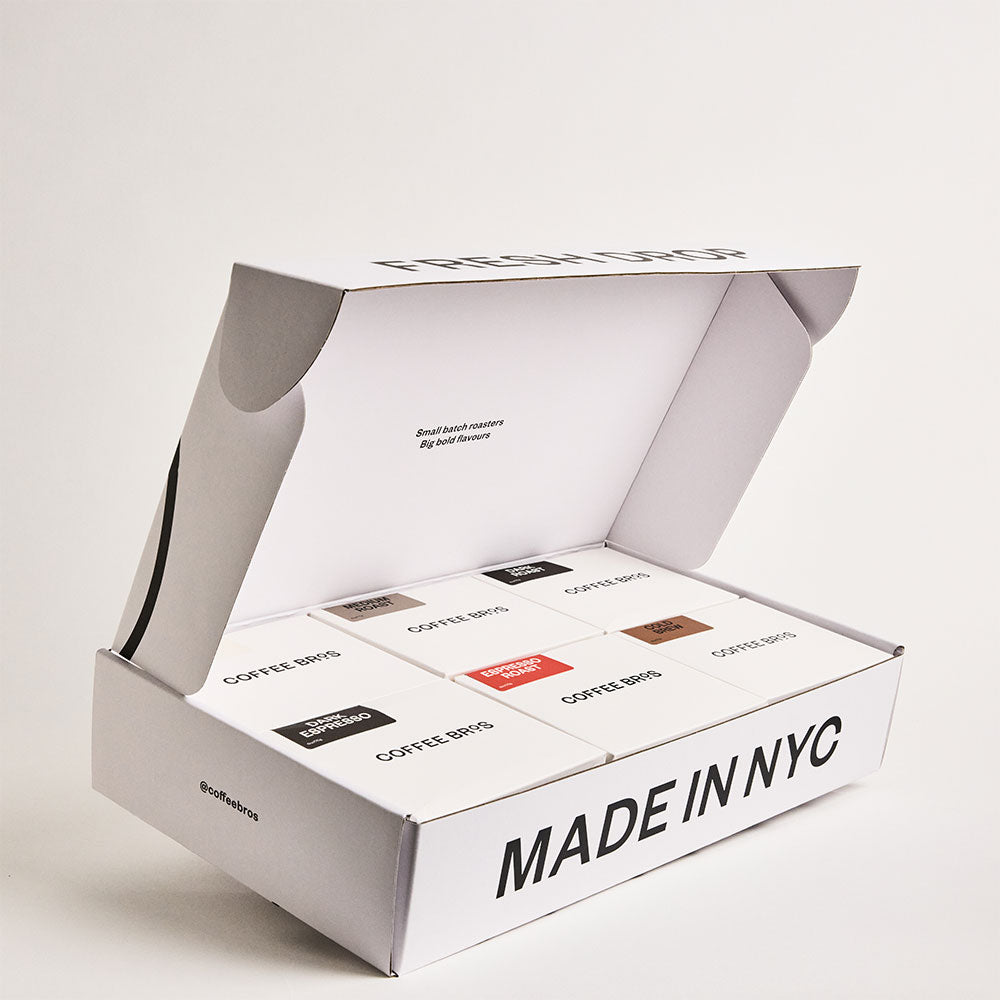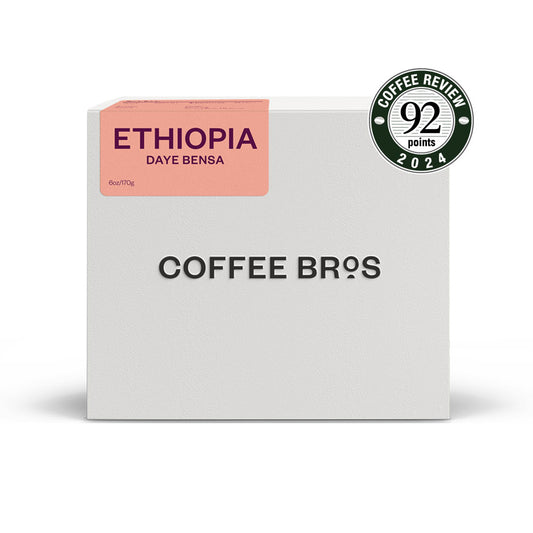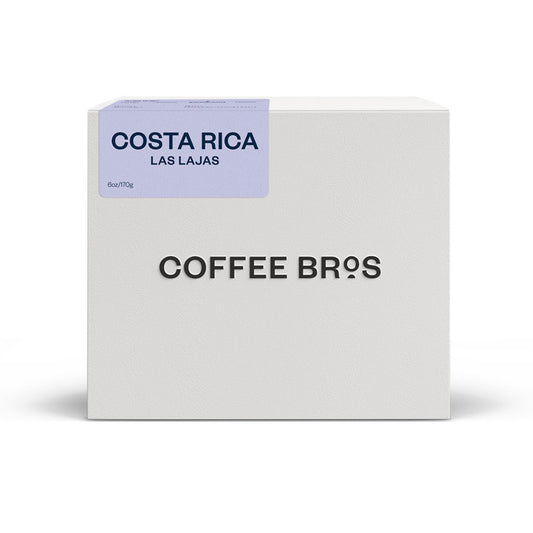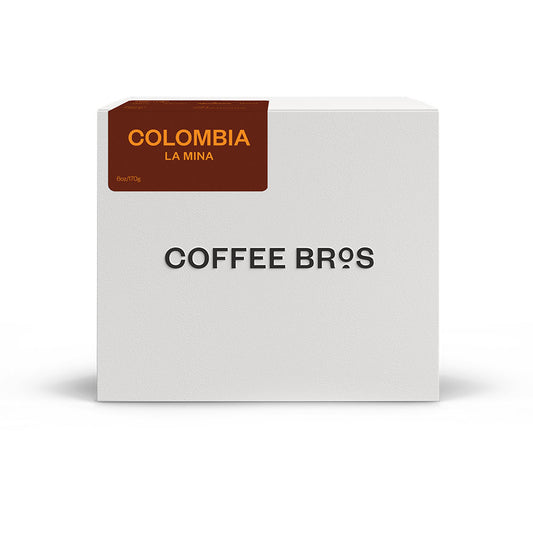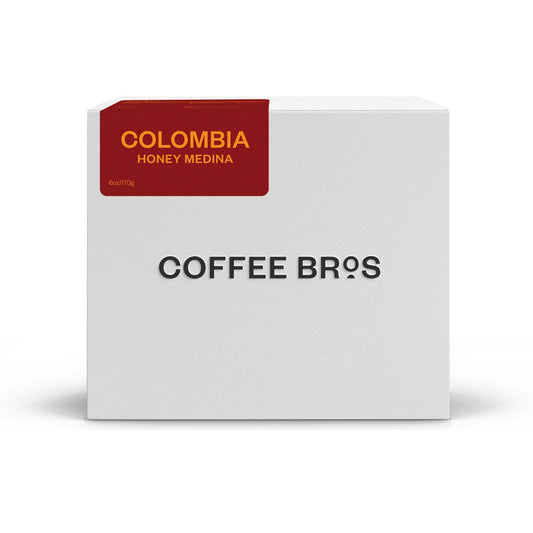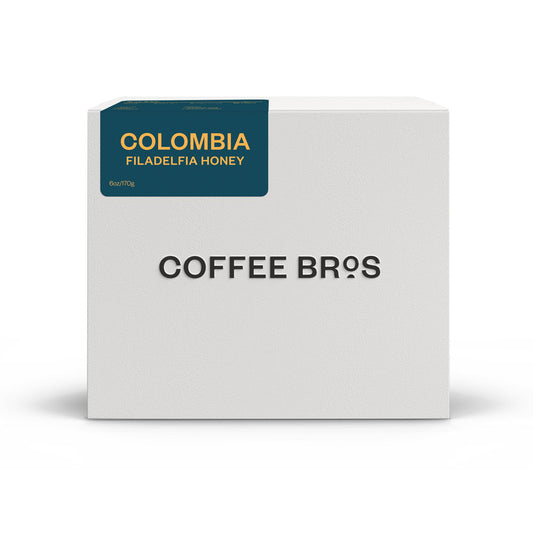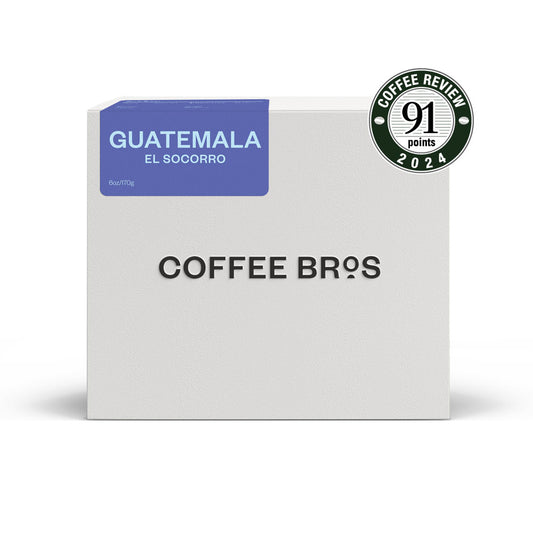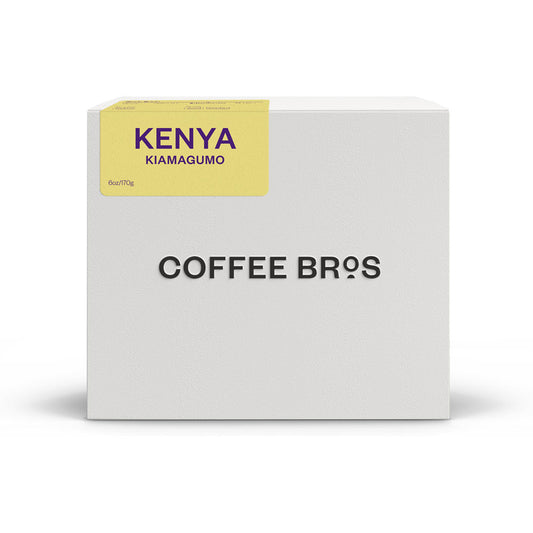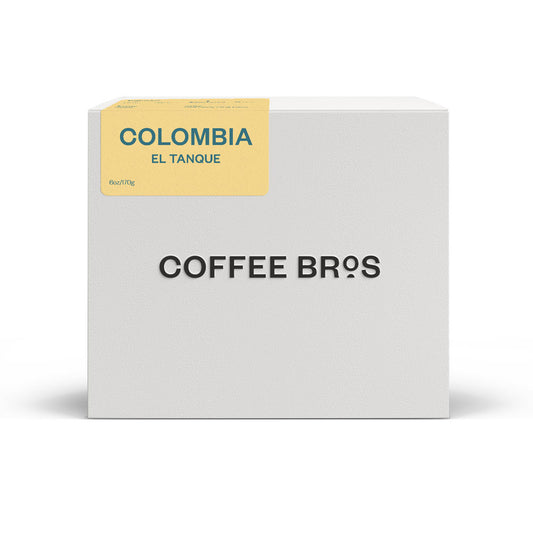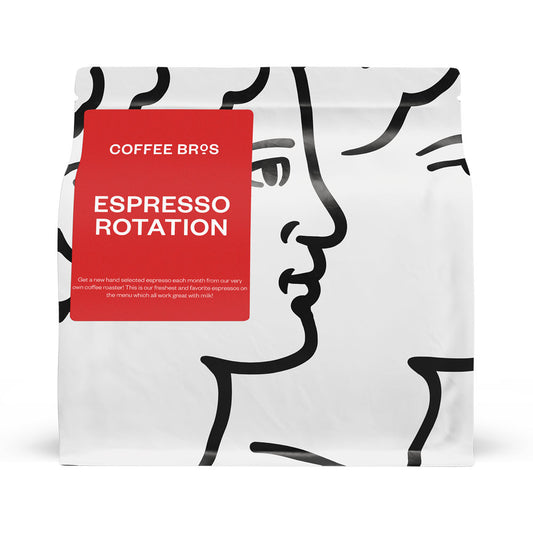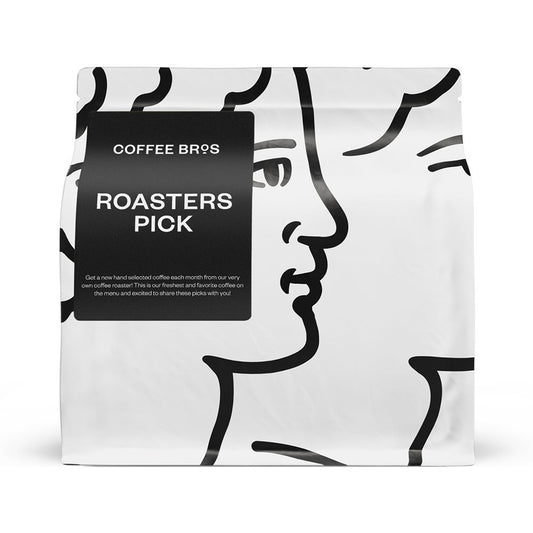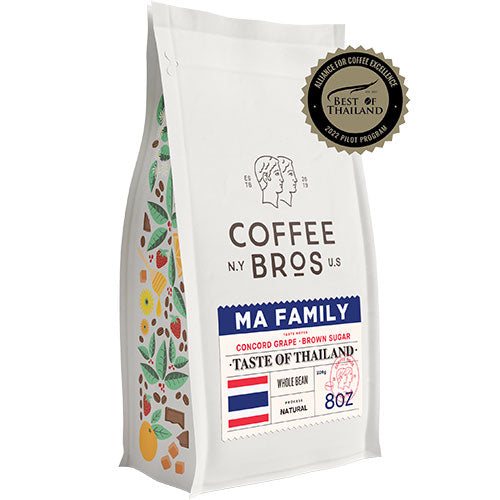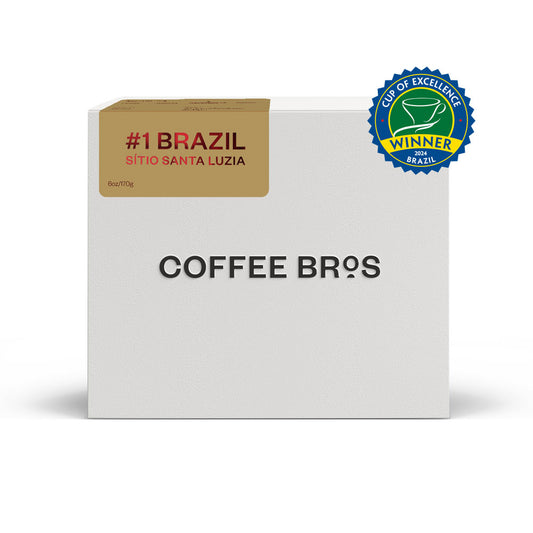Collection: All Coffee
Experience the best specialty coffee with our selection of Signature ... Series, Single-origin, and Award-Winning microlot coffees. As a sustainable coffee roaster, Coffee Bros. is dedicated to quality and ethical sourcing, working closely with producers and supporting organizations that help preserve and advance coffee as a plant species. Our rigorous standards ensure that all of our coffees score a minimum of 86 points, and we offer a wide range of roasts, from light to dark and everything in between.
Show more >Signature Series
-
Best Seller
Espresso Roast Coffee
A balanced and naturally sweet espresso - great for straight espresso or smaller milk-based drinks
A balanced and naturally sweet espresso - great...
Regular price From $10.29Regular priceUnit price / per -
Best Seller
Dark Espresso Roast Coffee
A bold and far from bitter espresso, chocolatey, heavy body, and perfect for milk-based drinks
A bold and far from bitter espresso, chocolatey...
Regular price From $9.79Regular priceUnit price / per -
Light Roast Coffee
An extremely sweet and delicate coffee with bright citrus notes
An extremely sweet and delicate coffee with bri...
Regular price From $10.29Regular priceUnit price / per -
Medium Roast Coffee
For those who enjoy the traditional chocolate, nutty, but with a bit of red fruit sweetness
For those who enjoy the traditional chocolate, ...
Regular price From $9.79Regular priceUnit price / per -
Dark Roast Coffee
A traditional-tasting dark roast but roasted slightly lighter to better highlight terroir
A traditional-tasting dark roast but roasted sl...
Regular price From $9.79Regular priceUnit price / per -
Cold Brew Coffee Blend
A blend of coffees from Ethiopia and Brazil for the perfect chocolatey, sweet cold brew
A blend of coffees from Ethiopia and Brazil for...
Regular price From $8.75Regular priceUnit price / per -
Holiday Blend Coffee | Costa Rica, Colombia | Natural
A seasonal holiday blend from all-star producers Las Lajas and La Esperanza
A seasonal holiday blend from all-star producer...
Regular price From $13.40Regular priceUnit price / per
Coffee Gift Box | Six Items | Single Origin or Signature Series
Share

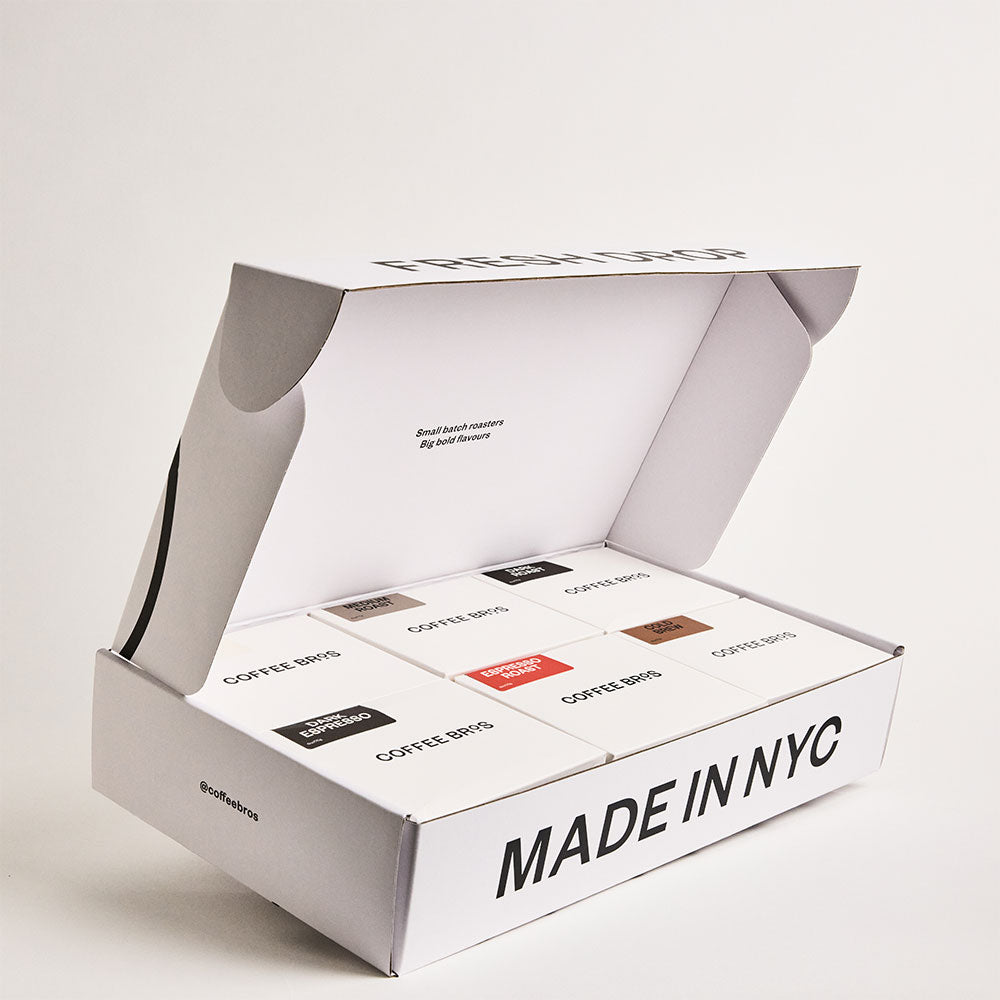
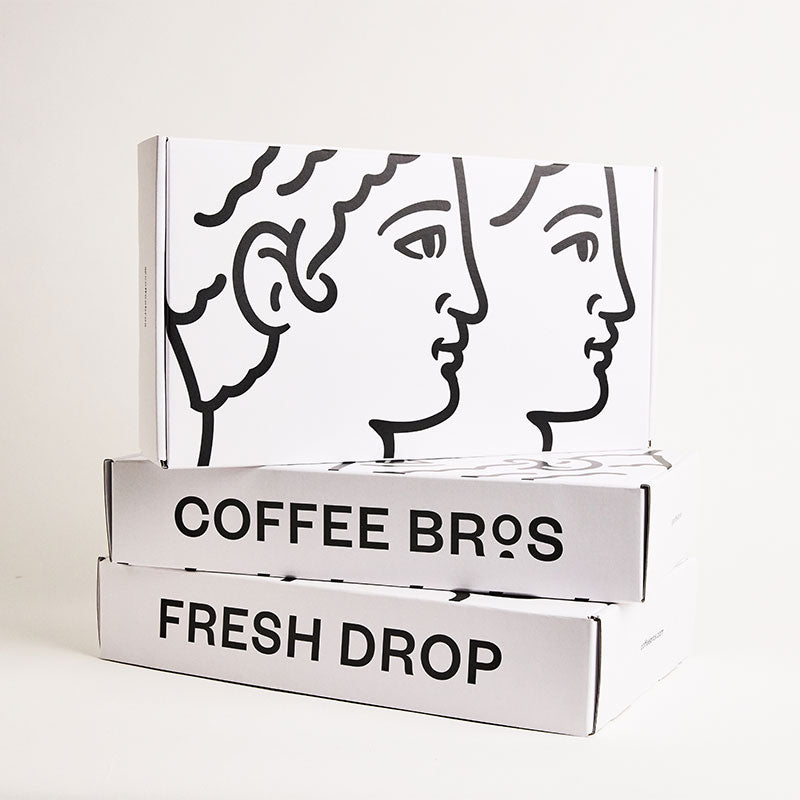
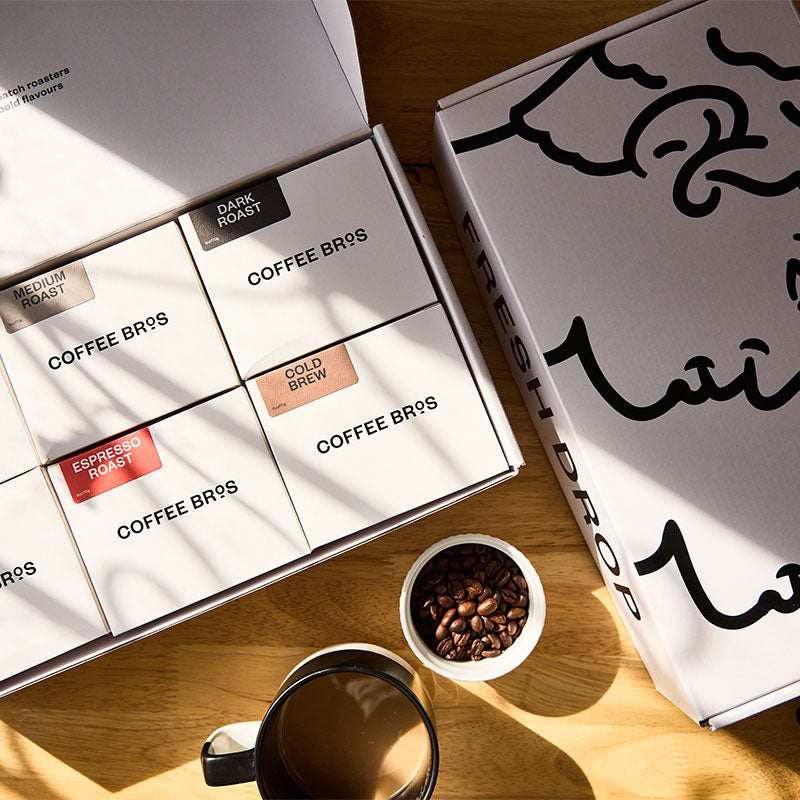
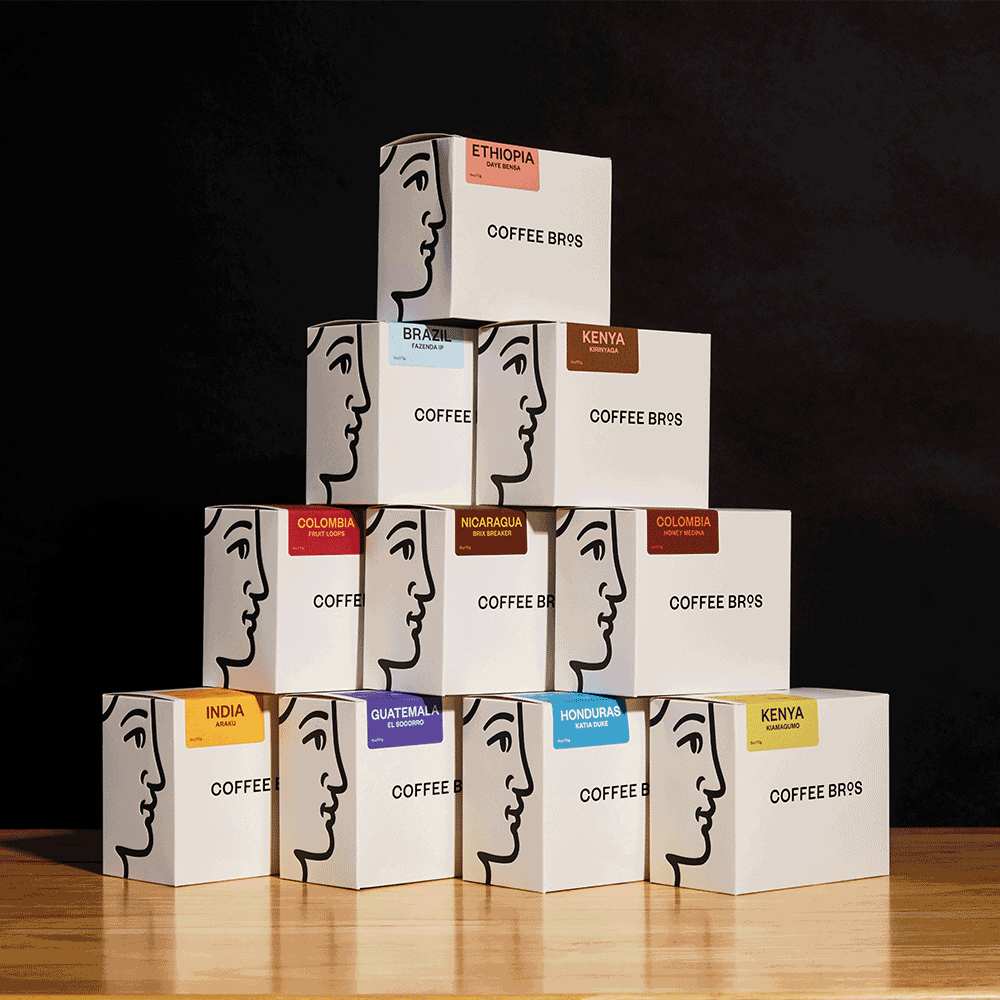
New Arrivals
-
Best Seller
Ethiopia | Daye Bensa | Natural
A crisp and clean light roast with brilliant fruit-forward notes from our friends at Daye Bensa
A crisp and clean light roast with brilliant fr...
Regular price From $12.85Regular priceUnit price / per -
Bolivia | Floripondio | Batian Natural
A Cup of Excellence-winning coffee with a clean, juicy taste with notes of orange and raisin
A Cup of Excellence-winning coffee with a clean...
Regular price From $29.99Regular priceUnit price / per$34.99Sale price From $29.99Sale -
Best Seller
Costa Rican | Las Lajas | Natural
An exceptionally well-balanced coffee with winey fruit and chocolate notes
An exceptionally well-balanced coffee with wine...
Regular price From $13.40Regular priceUnit price / per -
New
Colombia | La Mina | Natural
A well-balanced honey coffee that works exceptionally well as an espresso
A well-balanced honey coffee that works excepti...
Regular price From $12.89Regular priceUnit price / per -
New
Colombia | Honey Medina | Caturro Honey
A well-balanced honey coffee that works exceptionally well as an espresso
A well-balanced honey coffee that works excepti...
Regular price From $12.89Regular priceUnit price / per$26.99Sale price From $12.89Sale -
New
Colombia | Filadelfia Honey | Honey Fermentation
A well-balanced honey coffee that works exceptionally well as an espresso
A well-balanced honey coffee that works excepti...
Regular price From $15.99Regular priceUnit price / per -
Holiday Blend Coffee | Costa Rica, Colombia | Natural
A seasonal holiday blend from all-star producers Las Lajas and La Esperanza
A seasonal holiday blend from all-star producer...
Regular price From $13.40Regular priceUnit price / per -
New
Guatemala | El Socorro | Pacamara Natural
A crisp and clean light roast with brilliant fruit-forward notes from our friends at Daye Bensa
A crisp and clean light roast with brilliant fr...
Regular price From $12.89Regular priceUnit price / per
Single Origin Coffee
-
Best Seller
Ethiopia | Daye Bensa | Natural
A crisp and clean light roast with brilliant fruit-forward notes from our friends at Daye Bensa
A crisp and clean light roast with brilliant fr...
Regular price From $12.85Regular priceUnit price / per -
Best Seller
Costa Rican | Las Lajas | Natural
An exceptionally well-balanced coffee with winey fruit and chocolate notes
An exceptionally well-balanced coffee with wine...
Regular price From $13.40Regular priceUnit price / per -
New
Colombia | La Mina | Natural
A well-balanced honey coffee that works exceptionally well as an espresso
A well-balanced honey coffee that works excepti...
Regular price From $12.89Regular priceUnit price / per -
New
Colombia | Honey Medina | Caturro Honey
A well-balanced honey coffee that works exceptionally well as an espresso
A well-balanced honey coffee that works excepti...
Regular price From $12.89Regular priceUnit price / per$26.99Sale price From $12.89Sale -
New
Colombia | Filadelfia Honey | Honey Fermentation
A well-balanced honey coffee that works exceptionally well as an espresso
A well-balanced honey coffee that works excepti...
Regular price From $15.99Regular priceUnit price / per -
New
Guatemala | El Socorro | Pacamara Natural
A crisp and clean light roast with brilliant fruit-forward notes from our friends at Daye Bensa
A crisp and clean light roast with brilliant fr...
Regular price From $12.89Regular priceUnit price / per -
Kenya AA | Kirinyaga | Washed
An adventurous coffee with notes of plum, cocoa, and lemon
An adventurous coffee with notes of plum, cocoa...
Regular price From $12.89Regular priceUnit price / per -
Kenya Peaberry | Kiamagumo | Washed
An adventurous coffee with notes of plum, cocoa, and lemon
An adventurous coffee with notes of plum, cocoa...
Regular price From $12.89Regular priceUnit price / per -
Colombia | La Muralla | Pink Bourbon Honey
A bold, well-balanced honey processed coffee with notes of cooked apple
A bold, well-balanced honey processed coffee wi...
Regular price From $14.39Regular priceUnit price / per$29.99Sale price From $14.39Sold out -
Colombia | El Tanque | Dark Roast | Natural Process
A well-balanced honey coffee that works exceptionally well as an espresso
A well-balanced honey coffee that works excepti...
Regular price From $12.89Regular priceUnit price / per$26.99Sale price From $12.89Sold out -
Bolivia | Floripondio | Batian Natural
A Cup of Excellence-winning coffee with a clean, juicy taste with notes of orange and raisin
A Cup of Excellence-winning coffee with a clean...
Regular price From $29.99Regular priceUnit price / per$34.99Sale price From $29.99Sale -
Colombia | Fruit Loops | Gesha Washed
A lightly-roasted Gesha coffee from our partners at In Conexus with taste notes of "Froot Loops" cereal!
A lightly-roasted Gesha coffee from our partner...
Regular price $37.99Regular priceUnit price / per$39.99Sale price $37.99Sold out
Rotating Subscriptions
-
Espresso Rotation | Rotating Espresso Coffee Subscription
A bold, well-balanced honey processed coffee with notes of cooked apple
A bold, well-balanced honey processed coffee wi...
Regular price From $19.99Regular priceUnit price / per -
Roaster's Pick | Rotating Coffee Subscription
A bold, well-balanced honey processed coffee with notes of cooked apple
A bold, well-balanced honey processed coffee wi...
Regular price From $22.99Regular priceUnit price / per -
Signature Shuffle | Rotating Coffee Subscription
A bold, well-balanced honey processed coffee with notes of cooked apple
A bold, well-balanced honey processed coffee wi...
Regular price From $18.99Regular priceUnit price / per
Award-Winning Microlot Coffee
-
NewSold out
India | Gems of Araku | Natural
A natural fermented coffee from India that shines with notes of big-bodied spiced fruit bowl
A natural fermented coffee from India that shin...
Regular price From $14.45Regular priceUnit price / per$29.99Sale price From $14.45Sold out -
Thailand | Ma Family | Cup of Excellence
A stunning Cup of Excellence-winning coffee - notes of concord grape and brown sugar
A stunning Cup of Excellence-winning coffee - n...
Regular price $59.99Regular priceUnit price / per$64.99Sale price $59.99Sold out -
Brazil | #1 Cup of Excellence | Sítio Santa Luzia
The future of coffee: A coffee that represents the future of sustainable coffee production
The future of coffee: A coffee that represents ...
Regular price $79.99Regular priceUnit price / per
Looking for something extraordinary? We've got a selection of unique coffees from different roast types to origins. Use the selection below to find your match!
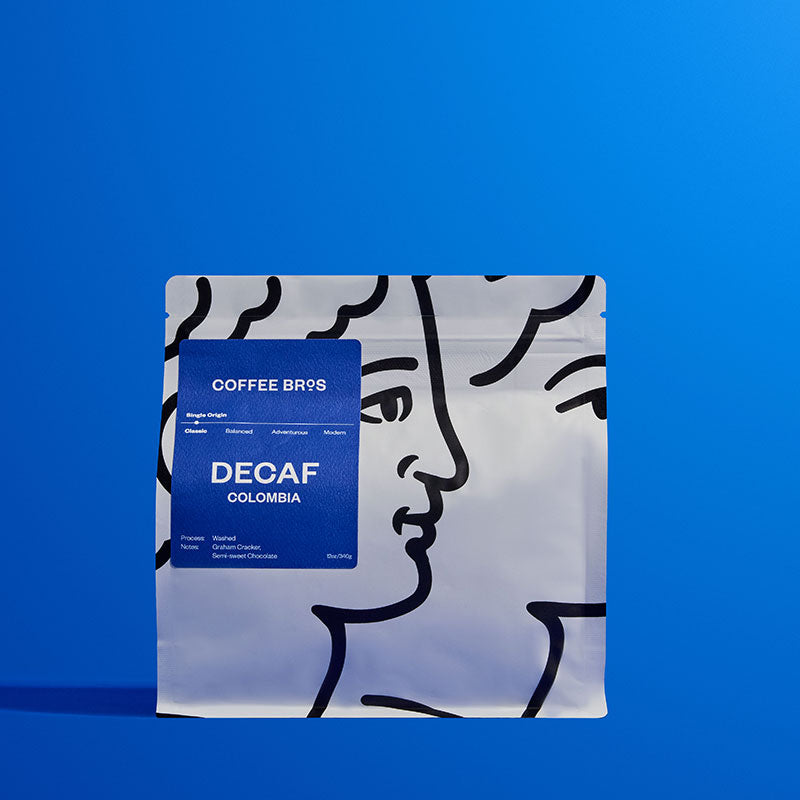
Save 12% When You Subscribe
12% off all subscriptions:
Flexible subscriptions – skip, modify, cancel, or temporarily pause at any time.
Expertly Roasted
All coffee is expertly roasted in small batches and shipped fresh weekly.
Ethically Sourced
We work with producers and partners who share the same commitment to coffee excellence and sustainability.
Shop by Flavor Profile
-

Classic
Those looking for approachable flavor profiles with muted acidity tend to appreciate coffees in this category. All coffees in Classic are sourced to hit notes of chocolate, nutty, with mild fruit acidity and roasted Medium - Specialty Dark.
-

Balanced
The balanced range has a bit more acidity than the Classic flavor profile, and while red or dark fruit notes are likely to be present, we also have coffees leaning in with bright citrus acidity and florals.
-

Adventurous
The adventurous range is for those unafraid of acidity and eager to taste coffees roasted a bit lighter to help highlight the region’s complete range of origin characteristics and processing influence.
-

Modern
Flavors present in the Modern profile are driven by one-of-a-kind processing methods, rare varietals, with careful and intentional influence from the producer through every step of harvesting.
Collections
-
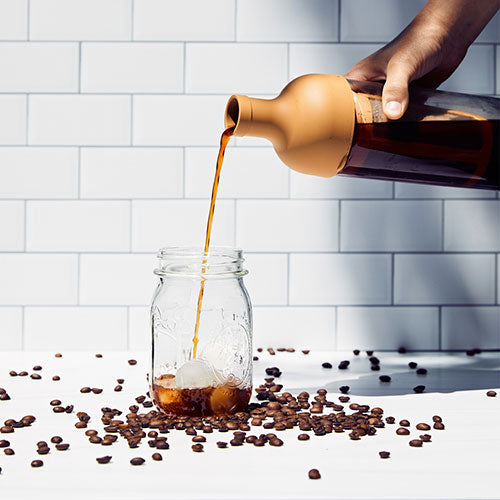
All Coffee
Experience the best specialty coffee with our selection of Signature Series, Single-origin,...
-
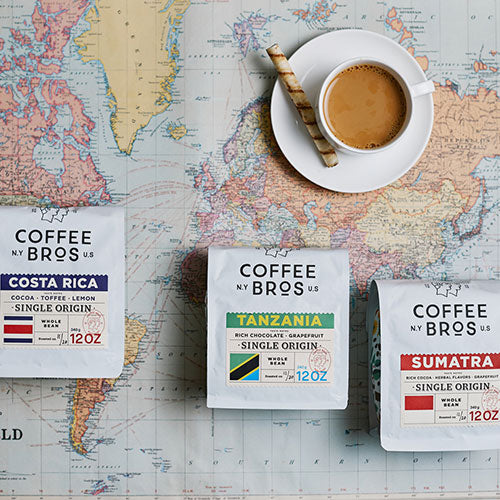
Single Origin
All of our single-origin coffees in this collection are 86+ point coffees...
-
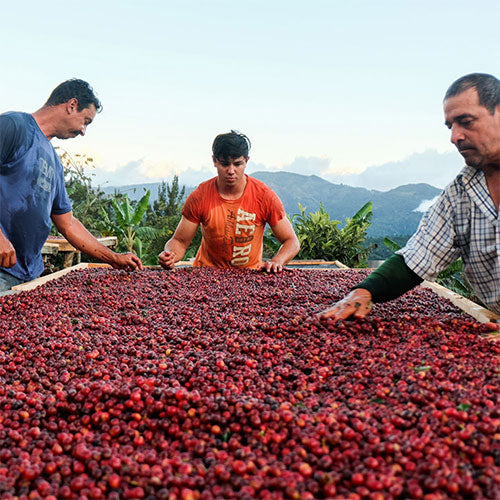
Award-Winning Coffee
Our Award-winning Coffees are sourced from high-end limited-edition lots, and auctions like...
-
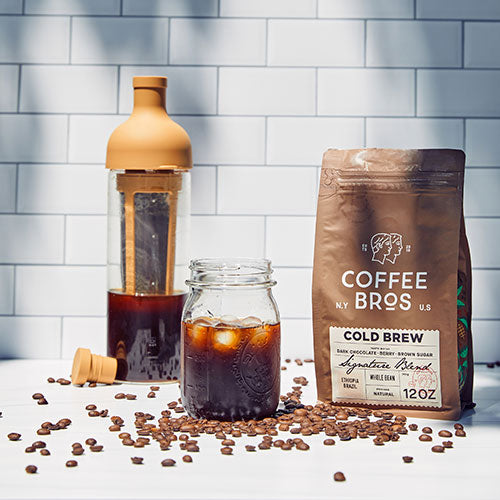
Signature Blends
Our Signature Blend coffees showcase unique flavor profiles that shine across any...
Coffee Questions
What is Specialty Coffee?
Specialty and third-wave coffee have become synonymous terms, but specialty coffee refers to a coffee of a specific grade.
Coffee is graded several times before making it to your cup, at origin, by importers, and finally by the roaster who decides to purchase the coffee. A coffee grade ultimately indicates quality; a coffee above 80 out of a 100 point scale is considered a specialty coffee.
Coffee receives its grade from a certified coffee taster or a licensed Q Grader, who evaluates coffee for Fragrance/Aroma, Flavor, Aftertaste, Acidity, Body, Balance, Uniformity, Clean Cup, Sweetness, Defects, and Overall taste.
The coffees score on a 100-point scale determines what is considered not specialty up to specialty and outstanding.
90-100: Outstanding - Specialty
85-99.99: Excellent - Specialty
80-84.99: Very Good - Specialty
< 80.0: Below Specialty Quality - Not Specialty
The difference between Light, Medium, and Dark roasts
The difference between light, medium, or dark roasted coffees goes deeper than their appearance in color and touches on their depth of roast (development) and intended taste notes.
We define coffee not only by the color but how far along in the roasting development process we take a coffee. We also "cup" or sample our coffees to ensure they hit on certain flavor profiles to hit on that a perceived roast color flavor. All-in-all, color is an excellent initial determining factor for what a coffee might taste like and give consumer hints on what to expect in their brewed cup.
Single Origin Coffee vs Blends
Single-origin coffee is sourced from a single location (country, region, city), while blends can be made of a combination of origins or different producers from the same origin.
Coffee roasters create blends for several reasons:
1. Blends allow coffee roasters to create something unique; think of their own signature recipe that no one else on the market has.
2. Coffee Blends allow coffee roasters to offer a consistent product throughout the year (like a House Blend). Blends allow roasters to rotate coffees in and out throughout the year to help with freshness and consistency, while Single-origin coffees are typically offered seasonally.
3. Finally, coffee blends help roasters manage costs during a constantly changing c-market. Coffee blends can help offset costs by using a slightly lower costs product with a higher-end, higher-scoring coffee.
What coffee is best for Espresso Drinks?
When searching for the perfect espresso blend or coffee for espresso, you must start with what type of drink you will be making. Those looking to drink straight espresso shots (single or double) have a wider selection than those who enjoy their espresso with milk. Lighter roasted coffees can make outstanding and sweet espresso, but their flavors may get lost when any addition of milk. For those who enjoy milk-based espresso drinks, look for coffees labeled as medium or dark roasts, as the bolder flavors will more easily cut through the milk.
What coffee is best for drip or pour-over?
Pour-over or drip coffee is a brewing method where any coffee roast type (light, medium, or dark) can work well and depends mainly on consumers' taste preferences. In contrast, we recommend being more thoughtful about your coffee choices when brewing for espresso or milk-based drinks.
As a simple rule of thumb, look toward light-roasted coffees if you enjoy bright and sweet coffees. Those who prefer bolder coffees and may even add milk to their morning brew look toward medium to darker roasted coffees.
Does coffee go bad?
While coffee does not technically go stale, it is worth noting that it is best enjoyed within 30 days after roasting. Other factors determine the freshness of the coffee, such as its age unroasted (is this coffee from the latest harvest), how the coffee is stored at the roasting facility, and if the coffee delivered to you was either whole bean or ground.
A good rule of thumb is as follows:
0 – 5 days after roasting: The coffee may need more time to settle before drinking
6 – 30 days after roasting: The sweet spot where coffee begins to open up and taste the best. Depending on the brew method, coffee starts to shine around days 10 – 20.
30 – 90 days: The age of the coffee starts to show, and you start to lose clarity and brightness
90+ days: The coffee is drinkable, but any unique flavor notes present on days 6 – 30 are gone.
Can you freeze coffee beans?
Yes, you can freeze coffee to keep them fresh for longer, but only if you follow these few simple steps.
Step 1: Freeze coffee after it has gone through the degassing process – 3 – 5 days after roasting. Freezing coffee at this point means you are locking it in at its optimal flavor.
Step 2: Separate your coffee into smaller air-tight batches you can pull from weekly. It doesn't make sense to freeze an entire bag if you will not drink it within a week or two after pulling it out of the freezer.
Step 3: Put it all in the freezer (this is the easy step)!
Step 4: Important—when you take the coffee out of the freezer, don't open it! You must let your beans completely thaw to room temperature before you open the bag/container. Otherwise, you'll get that rush of air and moisture… and all your hard work will be for nothing.
What is Third Wave Coffee?
The third wave of coffee is a movement within the coffee industry that emphasizes quality and ethical sourcing throughout the entire coffee experience, from cultivation to cup. It is focused on producing the highest quality coffee, as determined by its distinctive attributes and score on the Specialty Coffee Association's 100-point scale, with 80 and above considered specialty coffee. This movement differs from previous waves of coffee in that it places a greater emphasis on the process of crafting a superb cup of coffee and understanding coffee at all stages of production.
- Choosing a selection results in a full page refresh.


